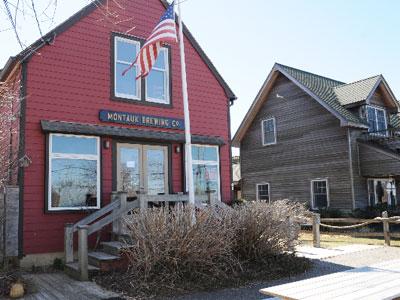Obstacles on Obstacles
Obstacles on Obstacles
East Hampton Town and Village are perhaps the only local governments in the country to have incorporated the requirements of the federal Americans with Disabilities Act of 1990 into their codes.
Access has been improved in public places, but the Parks Department has more to do, and local businesses need to start conforming to the dictates of the A.D.A.’s “readily achievable” mandate, that is, requiring improvements to help the handicapped that can be made, within reason, according to Glenn Hall, a member of East Hampton Disabilities Advisory Board.
The village has given the job of inspecting businesses to code enforcement officers and the inspections will begin soon. The town was looking to the fire marshal’s office to do the inspections, but that department does not have the manpower or budget to handle the job.
East Hampton’s Disabilities Advisory Board serves both the town and the village. It was created as the Handicapped Advisory Committee in the 1970s at the suggestion of former state assemblyman John Behan of Montauk. In a recent interview, Mr. Hall said that while the town incorporated the federal mandates and used them to improve accessibility early on, its inability to follow through, to finish creating “a level playing field, to remove barriers and give equal access” was a political failure of major proportions, one that has affected all of the town’s departments.
Dominick Stanzione, town councilman and liaison to the disabilities board, said on Tuesday that although it was true the town’s departments were strapped, “I’d say that’s a national problem, not an East Hampton problem. We didn’t have a capital budget in three years due to the fiscal emergency. Now that we’ve had substantial progress righting the fiscal ship, there’s no way of escaping criticism. We can understand how it’s not satisfying to advocates.”
Mr. Stanzione said there was between $15,000 and $30,000 in the current budget for mailings to businesses advising them of their A.D.A. obligations, and that the town board had worked to waive fees for business owners making A.D.A.-related improvements.
“As we develop our next budget we have now created a line item for A.D.A. compliance. Our capital budget contains money for making town facilities, parks compliant. The readily achievable issue deals with minor things. Unfortunately, the fire marshal is understaffed.” By bringing the federal A.D.A. law into the town code, Mr. Stanzione said, “the town placed a burden on ourselves. . . . We are now struggling in a positive way to achieve those goals.”
Mr. Hall stressed that the town’s obligations to the A.D.A. were not part of an informal wish list but were legal requirements. He recalled that it was obstacles preventing disabled people, including himself, from enjoying a movie at the East Hampton theater that prompted former town supervisor Jay Schneiderman to suggest that the town and village absorb the federal law.
“Village police could not enforce federal law. We would have had to go to federal court. We did it with public opinion instead,” Mr. Hall said. It took a couple years for the town attorney’s office to incorporate the A.D.A. into the town code, Mr. Hall said.
The A.D.A. requires that all new construction of public buildings include things that have become standard, such as doors requiring no more than five pounds of pull to open, hand railings in rest rooms, wheelchair ramps, etc. Older buildings that are renovated must comply as though they were new, “within reason,” Mr. Hall said. The “grandfathered concept” — buildings constructed before passage of the A.D.A. — also fall under the law’s “readily achievable” sections.
“Now all those rules are enforceable by the town and village. All municipalities receive federal money. They have been required to abide by the A.D.A. since ’05. They have no choice,” Mr. Hall said.
No choice, perhaps, but in the town’s case, no money either. “The cost of readily achievable is not much. It’s a fixed number, and it’s not ongoing,” Mr. Hall said, explaining that the fixes themselves were often not expensive, and once done, they’re done.
If an inspection finds an obstacle to access and a business believes correcting it would be a financial hardship the law includes an appeals process. From the municipalities’ point of view the expense comes from the initial inspections and follow-ups.
The disabilities advisory board has tried to urge the inspection system forward with a “referral form,” Mr. Hall said, “a one-pager that inspectors can use to point out noncompliance: no handicapped parking, sidewalks that are not level, no curb cuts, etc.” The forms, filled out and given to various departments, have been working, Mr. Hall said. “One by one things get done, but the goal is not piecemeal. That’s not the way. It’s time to obey the law. We’re now looking for a way to inspect.”
East Hampton Village is ready and able. In the next few months, the village’s businesses will receive a letter from the administration outlining the readily achievable goal, and they will get a personal letter from the advisory board explaining how important the improvements will be to disabled residents. Larry Cantwell, the village administrator, said on Tuesday that the inspections would be undertaken by the village’s office of code enforcement.
The town is another story, Mr. Hall said, a sad tale that began with the loss of advocates for the disabled due to financial missteps made during former supervisor Bill McGintee’s administration and subsequent budget cuts made by his successor, Bill Wilkinson and the town board’s Republican majority.
Pete Hammerle, the town board’s liaison to the disabilities board during the McGintee and early Wilkinson years, showed up for meetings “maybe once or twice,” Mr. Hall said. Edna Steck, former director of the town’s Human Services Department, “who was valuable to the advisory board,” took an early retirement offered as a cost-cutting measure. Richard Rosenthal, the town’s part-time disabilities officer, lost his job due to the budget crunch.
Mr. Hall said that during a meeting a year ago with Patrick Gunn, assistant town attorney in charge of the division of public safety, members of the advisory committee were told the departments simply did not have the money take on the inspections.
“We are left with no one connecting us to the town board. We shouldn’t be begging. Our job is to advise on how to comply with the law. Normally the liaison would take our suggestions to town and move forward. The problem is, we have not moved forward because of budgetary constraints. It’s been five years of not making town readily accessible to the disabled.”
“In the past, we have had to make a public spectacle like at Guild Hall, the Bank of New York, Nick and Toni’s,” Mr. Hall said referring to a number of civil actions to force compliance in East Hampton. “To have to resort to shaming people is really sad.”





